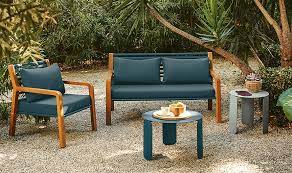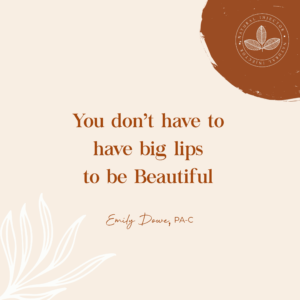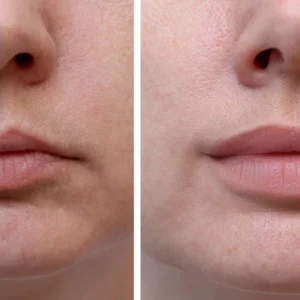Linen and cotton are two of the most popular fabrics in the world. Both have been used for thousands of years, and each has its own unique set of properties that make it attractive to different types of people. However, when it comes to choosing between linen and cotton, many people wonder which one is better.
In this article, we will explore the differences between linen and cotton, including their origins, properties, benefits, drawbacks, and common uses. We will also help you decide which fabric is best for your needs based on factors such as comfort, durability, ease of care, sustainability, style preferences, and budget. By the end of this article, you’ll have a better understanding of whether linen or cotton is better suited for your lifestyle.
Linen vs. Cotton
Linen and cotton are both popular fabrics for clothing, bedding, and other household textiles. While both materials have their unique features, it is hard to say whether one is better than the other. Linen is known for its breathable quality, making it perfect for summer wear or warm climates. It also has excellent moisture-wicking properties that help keep the body cool and dry. On the downside, linen wrinkles easily and requires special care when washing.
Cotton, on the other hand, is versatile and widely used in different seasons as it offers a soft texture that feels comfortable against the skin. Cotton also holds up well after multiple washes without losing its shape or fading in color. However, cotton may not be as breathable as linen due to its tighter weave which makes it less suitable for hot weather conditions.
Ultimately, choosing between linen or cotton depends on personal preference and intended use of the fabric. Both materials have their pros and cons but can result in high-quality textile products if cared for properly.
Phalar linen is a high-quality textile product that is known for its durability, strength, and softness. Made from the fibers of the phalaris grass, this linen is carefully crafted to ensure that it meets the highest standards of quality and performance. The manufacturing process involves spinning the fibers into yarn, which is then woven into fabric using advanced techniques and machinery.
One of the key benefits of Phalar linen is its excellent breathability and moisture-wicking properties. This makes it an ideal choice for clothing and bedding, as it can help regulate body temperature and keep the wearer comfortable throughout the night. Additionally, Phalar linen is naturally hypoallergenic, making it a great option for those with sensitive skin.
Another advantage of Phalar linen is its ability to withstand wear and tear over time. Unlike other fabrics that may become weak and frayed with use, Phalar linen is incredibly strong and durable, making it a great investment for those looking for a long-lasting textile product.
Overall, Phalar linen is a premium textile product that offers exceptional quality, performance, and durability. Whether used in clothing, bedding, or other applications, it is sure to provide a comfortable and reliable experience for its users.
Differences:
Linen and cotton are two of the most commonly used materials in clothing and home textiles. While they may seem similar at first glance, there are some key differences between them that make each material unique. One major difference is the way they feel on the skin. Cotton tends to be soft and smooth, while linen feels more textured and rougher to the touch.
Another important difference is how each material behaves when it comes to moisture absorption. Cotton has a reputation for being highly absorbent, making it a popular choice for towels, bedding, and other items where moisture management is important. Linen, on the other hand, does not absorb moisture as readily as cotton does but instead wicks away sweat from your body keeping you cool and dry.
Finally, there’s the question of durability. Both cotton and linen can last a long time if cared for properly; however, linen has been known to outlast cotton due to its strength properties. So while both materials have their advantages depending on what you’re looking for in terms of comfort or practicality – it ultimately comes down to personal preference!
Strength, comfort, durability
:max_bytes(150000):strip_icc()/definition-of-linen-fabric-1976785-hero-81525102a02743f5bee75fa839eef33a.jpg)
When it comes to comparing linen and cotton, the debate over which is better has been going on for a long time. However, one thing that can be agreed upon is that linen offers more strength and durability than cotton. Linen fibers are thicker and stronger than cotton, making them more resistant to wear and tear.
Linen also provides unparalleled comfort due to its natural ability to regulate body temperature. It keeps you cool in hot weather while insulating against the cold in winter. Linen fabrics feel soft and smooth on the skin with repeated washing because they become softer over time.
Lastly, linen’s durability ensures that your investment remains valuable for years. Linen sheets last longer than regular cotton sheets because of their strength. So if you’re looking for bedding or clothing with longevity as well as style, investing in quality linen pieces is worth considering over other materials such as cotton.
Environmental impact:
As the world becomes more environmentally conscious, it’s important to consider the impact of our everyday choices. When it comes to textiles, there is a big debate over which material is better for the planet: linen or cotton. While both are natural fibers and biodegradable, linen has several advantages over cotton in terms of environmental impact.
Firstly, linen requires less water than cotton to grow and produce. Cotton is notoriously known as a thirsty crop that requires vast amounts of water to cultivate and process into fabric. On average, one pound of cotton can take up to 2,700 liters of water to produce compared to just 6 liters for one pound of linen. This significant difference makes linen a more sustainable choice when it comes to conserving water resources.
Secondly, growing cotton typically involves heavy use of pesticides and fertilizers that can have harmful effects on both the environment and human health. In contrast, flax (the plant from which linen is made) requires fewer pesticides and fertilizers since it naturally grows taller than weeds. Choosing linen over cotton can therefore help reduce the amount of harmful chemicals released into our air and soil during textile production.
In conclusion, while both materials have their pros and cons in terms of sustainability, choosing linen instead of cotton can significantly reduce your environmental footprint by conserving water resources and minimizing exposure to harmful chemicals.
Water usage, pesticide use
When it comes to sustainable fashion, the choice of fabric is critical. Two popular choices are cotton and linen. While cotton requires an enormous amount of water during its production, linen needs significantly less. It takes about 2,700 liters of water to produce a conventional cotton t-shirt, while only 6.4 liters are required for a linen t-shirt. In addition to this, the production of cotton also involves the use of pesticides that harm both human health and the environment.
On the other hand, flax plants used in making linen require no chemical pesticides or fertilizers to grow and thrive. This makes linen a more environmentally friendly option overall compared to cotton when looking at water usage and pesticide use.
In conclusion, if you’re looking for an eco-friendly alternative to conventional fabrics such as cotton, then choosing linen would be a great choice in terms of sustainability because it uses much less water during production and doesn’t require any harsh chemicals like pesticides or fertilizers that can damage both humans and the environment alike.
Uses and benefits:
One of the most popular debates in the textile industry is whether linen or cotton is better. While both fabrics have their advantages and disadvantages, linen has several unique uses and benefits that make it stand out. One of the primary benefits of linen is its durability. Linen fibers are incredibly strong and can withstand multiple washes without losing their quality.
In addition to its durability, linen also has excellent absorbency, making it an ideal fabric for towels, tablecloths, and napkins. The fabric’s ability to absorb moisture means that it dries quickly after washing and does not retain odors or bacteria. Linen is also hypoallergenic, making it a great choice for people with allergies or sensitive skin.
Another notable benefit of linen is its breathability. The fabric allows air to circulate freely around the body, keeping you cool and comfortable even in hot weather conditions. This feature makes linen an excellent choice for summer clothing like dresses, skirts, and shirts. Overall, while both cotton and linen have their pros and cons, the unique properties of linen make it an attractive option for various uses, from home decor to fashion garments.
Breathability, absorbency, and versatility
When it comes to choosing between linen and cotton, breathability, absorbency, and versatility are important factors to consider. Linen is known for its exceptional breathability. It allows air to circulate freely through the fabric which makes it perfect for summer clothing or in warm climates. On the other hand, cotton is also breathable but not as much as linen.
In terms of absorbency, both fabrics are good at absorbing moisture but in different ways. Cotton absorbs sweat more easily but retains that moisture which can lead to dampness and discomfort whereas linen quickly wicks away moisture from the skin without retaining any of it making it ideal for humid conditions.
Lastly, when it comes to versatility, both fabrics offer a wide range of options. Linen is commonly used for clothing such as suits and dresses while cotton can be found in everything from t-shirts to underwear. In addition, both fabrics can be blended with other materials such as silk or wool to enhance their properties.
Overall, while there are pros and cons to each fabric type depending on the intended use case scenario, if you’re looking for something that’s lightweight and comfortable during hot weather conditions then linen might just be your best bet due its superior breathability qualities over cotton.
Care and maintenance:
When it comes to care and maintenance, linen and cotton fabrics have different requirements. Linen is a durable fabric that can withstand frequent washing but should be washed in cold water to prevent shrinkage. It’s best to avoid using bleach or fabric softeners as they can damage the fibers and cause discoloration. When drying linen, it’s recommended to hang dry or use a low heat setting on the dryer to prevent excessive wrinkling.
Cotton is also a durable fabric that can handle frequent washing, but it’s important not to over-dry or expose it to high temperatures as this can cause shrinkage and damage the fibers. Bleach should be used sparingly as it can weaken the fabric over time. Fabric softeners are generally safe for cotton, but natural alternatives like vinegar or baking soda can also help soften the fabric without causing any harm.
Overall, both linen and cotton require gentle care to ensure their longevity. However, when compared side by side, linen tends to be more durable than cotton due to its strong fibers and ability to hold up against repeated washings without losing its shape or texture.
Washing instructions, ironing tips
Linen and cotton are two natural fabrics that are commonly used in clothing, bedding, and home decor. While both materials have their advantages and disadvantages, they require different washing instructions and ironing tips to maintain their quality.
Linen is a strong fabric that is known for its durability and breathability. However, it wrinkles easily and requires gentle handling during washing and ironing. To wash linen garments or linens at home, use cold water with a mild detergent on the gentle cycle setting. Avoid using bleach or harsh detergents as they can damage the fibers. To remove wrinkles from linen, use a steamer instead of an iron as excessive heat can cause the fabric to scorch.
On the other hand, cotton is soft, comfortable, easy to care for and comes in a variety of textures ranging from smooth to coarse. Cotton garments can be machine washed with warm water on a regular cycle using any type of detergent without worrying about causing any damage. It’s also ideal to tumble dry cotton clothes on low heat if possible as high temperatures might shrink them. Use an iron set to medium temperature when you want your cotton clothes crisp.
In conclusion, choosing between linen or cotton ultimately depends on personal preference when it comes to comfortability versus ease of care for material items such as bed linens or clothing items for everyday wear.
Cost comparison:
When it comes to comparing the cost of linen vs. cotton, there are several factors to consider. While linen tends to be more expensive than cotton upfront, it is also known for its durability and longevity. This means that investing in linen sheets or clothing may actually save you money in the long run since they will last longer than their cotton counterparts.
However, if you’re on a tight budget, cotton may be the better choice as it is typically more affordable upfront. Additionally, while linen is breathable and cooling, making it ideal for warmer climates or hot sleepers, cotton can also provide comfort during warmer months with its lightweight and soft texture.
Ultimately, deciding between linen and cotton comes down to personal preference and budget constraints. If you prioritize quality over affordability and plan on using your bedding or clothing for years to come, investing in linen might be worth the extra cost. But if price is a top concern or you prefer the feel of soft cotton against your skin, then opting for this fabric could make more sense for you.
Price per item or yardage
When it comes to deciding whether you should charge by the yardage or per item, there are a few things to consider. Firstly, if you are dealing with materials that may vary in size or shape, charging per item might be more suitable. However, if your materials come in consistent sizes and shapes such as fabrics sold in yards, pricing by yardage could be a better option.
Now moving onto the question of whether linen is better than cotton. While both fabrics have their unique qualities and advantages depending on their intended use, linen is often considered to be the superior choice due to its durability and moisture-wicking properties. Linen also tends to get softer with each wash while still maintaining its shape and structure.
On the other hand, cotton is known for being soft and comfortable against the skin which makes it an ideal fabric for clothing items such as t-shirts and undergarments. It’s also widely available at a lower price point compared to linen making it more accessible for everyday use. Ultimately when deciding between these two popular fabrics, it really depends on what your specific needs are – do you prioritize durability or comfort?
Which is the better choice?
Linen and cotton are two popular fabrics that have their own unique features. Linen is a highly breathable and lightweight fabric that is made from the fibers of flax plants, while cotton is a soft, comfortable and durable fabric that comes from the fibers of cotton plants. Both fabrics offer excellent qualities in terms of comfort, versatility, durability and overall performance.
However, when it comes to choosing between linen or cotton, it ultimately depends on your personal preference and specific needs. If you want a highly breathable fabric for hot weather conditions or summer clothing items, then linen would be an excellent choice due to its moisture-wicking properties. On the other hand, if you prefer a softer feel against your skin or need something more durable for everyday wear or bedding items, then cotton may be the better option.
Overall, both linen and cotton are great choices depending on your preference and intended use. Consider factors such as climate conditions, usage frequency, texture preferences and maintenance requirements before making your final decision.





